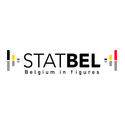In short
A national Health Interview Survey (HIS) provides an overall picture of the health status of the population and allows to identify the main health problems, as well as the social and behavioral factors that influence them. This information enables health authorities to pursue a proactive health policy aimed at improving public health and addressing the needs of groups at risk. Researchers, experts and the press use the results of the HIS.
Project description
We organized a large-scale Health Interview Survey (HIS) among the Belgian population for the first time in 1997, something we have repeated every 4 to 5 years since. The 7th Health Survey started in January 2023. The fieldwork ran until December 2024. The collected data will be analysed in the course of 2024/25 and will the first results will be published by September 2025.
The HIS collects information on a wide range of health topics: physical and mental health, lifestyle, use of health care and preventive services, perception of the physical and social environment, etc. Furthermore, the HIS has been part of the European Health Interview Survey (EHIS) since 2013. This allows not only to study time trends in different health domains and in health inequalities, but also to compare the Belgian results with those of the other EU Member States. In 2018, a health survey was also conducted among some of the HIS participants (Health Examination Survey – HES). In 2023-2024, an oral health survey (Oral Health Data Registration and Evaluation System – OHDRES) will take place with selected HIS participants. More information about this research can be found on the OHDRES project page.
Method and sample
The HIS is a cross-sectional population survey with a net sample of 10,000 participants. A stratified multi-stage, clustered sampling method is applied in which the regional numbers are fixed (3,500 participants each in the Flemish Region and the Walloon Region and 3,000 in the Brussels Region), with possible oversampling of certain groups. The National Register is used as a sampling framework. In each region a limited number of municipalities are selected, from which a limited number of households are then selected. A maximum of 4 members per household can participate in the interview. In order to take non-participation into account and to ensure the predetermined net sample size is achieved, non-participating households are replaced.
The fieldwork is spread over a calendar year. First, the selected households receive an introductory letter and an information folder and then a trained interviewer visits the respondents’ homes to conduct the interview. Data collection is done using a Computer Assisted Personal Interview (CAPI). There is no age limit for participation, but a proxy interview is used for children under 15 years of age. The more sensitive data are collected using a self-administered questionnaire and should only be completed by respondents aged 15 and over.
The survey has been approved by the Data Protection Authority and has also received positive review from the Ethics Committee of Ghent University Hospital.
For more information on the sample and the fieldwork, see the HIS 2023 methodological report (![]() Dutch version -
Dutch version - ![]() French version).
French version).
Protocol and questionnaires
- The
 study protocol describes the objectives, the scientific relevance, the methodology, the communication of results and reporting, the ethical aspects and the organization of the project.
study protocol describes the objectives, the scientific relevance, the methodology, the communication of results and reporting, the ethical aspects and the organization of the project. - The questionnaires are available in Dutch, French, German and English. Since the HIS 2013, the
 face-to-face questionnaire has been administered via a computer (Computer Assisted Personal Interview — CAPI). The reference person or his/her partner answers the household level questionnaire each selected person (up to a maximum of 4 people per household) answers the individual questionnaire that may be partly completed by a proxy. In addition, each selected person aged 15 years and over answers a
face-to-face questionnaire has been administered via a computer (Computer Assisted Personal Interview — CAPI). The reference person or his/her partner answers the household level questionnaire each selected person (up to a maximum of 4 people per household) answers the individual questionnaire that may be partly completed by a proxy. In addition, each selected person aged 15 years and over answers a  written questionnaire (also available in
written questionnaire (also available in  French,
French,  Dutch and
Dutch and  German that includes the generally more sensitive questions. This questionnaire cannot be completed by a proxy.
German that includes the generally more sensitive questions. This questionnaire cannot be completed by a proxy.
Procedure for accessing the Health Interview Survey microdata
The HIS 2018 database includes data on health status, lifestyle, use of health services and socio-demographic characteristics of a representative sample of the Belgian population. The steps that have to be followed to query this database are described in detail in this procedure.
Results
The widespread use of the HIS data encourages the development of evidence-based health policies, which in turn improves the health of the population and reduces health inequalities. That is why we aim to facilitate the procedure for external users to access the HIS data.
All HIS results are available online in extensive reports and via the interactive tool HISIA , which can be used to conduct your own analyses.
Health Interview Survey 2023-2024:
Here are the first results of the Health Interview Survey 2023-2024.
Health Interview Survey 2018:
Health and quality of life
- Main results (Dutch report — French report)
- Subjective health (Dutch report — French report)
- Chronic conditions (Dutch report — French report)
- Frailty among elderly (Dutch report — French report)
- Long-term limitations (Dutch report — French report)
- Bodily pain (Dutch report — French report)
- Health-related quality of life (Dutch report — French report)
- Absence from work (Dutch report — French report)
Lifestyle
- Main results (Dutch report — French report)
- Nutritional status (Dutch report — French report)
- Physical activity (Dutch report — French report)
- Nutritional habits (Dutch report — French report)
- Alcohol use (Dutch report — French report)
- Smoking (Dutch report — French report)
- Electronic cigarets (Dutch report — French report)
- Illegal drugs (Dutch report — French report)
- Gambling (Dutch report — French report)
- Reproductive health (Dutch report — French report)
Preventive knowledge and practices
- Main results (Dutch report — French report)
- Knowledge and behaviour in relation to HIV/AIDS (Dutch report — French report)
- Health literacy (Dutch report — French report)
- Cancer screening (Dutch report — French report)
- Vaccination (Dutch report — French report)
- Screening of cardiovascular risk factors and diabetes (Dutch report — French report)
Mental health and well-being
- Summary (Dutch version — French version)
- Full report (Dutch version — French version)
Use of health services
- Main results (Dutch report — French report)
- Ambulatory contacts with physicians and dentists (Dutch report — French report)
- Contacts with paramedics (Dutch report — French report)
- Contacts with practitioners of non-conventional health care (Dutch report — French report)
- Hospitalizations (Dutch report — French report)
- Services for home care (Dutch report — French report)
- Medical drugs (Dutch report — French report)
- Financial accessibility for health care (Dutch report — French report)
- Patient experiences (Dutch report — French report)
Health and society
- Main results (Dutch report — French report)
- Environment, lodging and passive smoking (Dutch report — French report)
- Accidents (Dutch report — French report)
- Violence (Dutch report — French report)
- Social health (Dutch report — French report)
- Informal care (Dutch report — French report)
Health Interview Survey 2013
- Health and well-being (Dutch report — French report)
- Health behavior and lifestyle (Dutch report — French report)
- Health and social services (Dutch report — French report)
- Health and society (Dutch report — French report)
- Prevention (Dutch report — French report)
You can also request by email the protocol, the questionnaires and the reports of the previous Health Interview Surveys (2018, 2013, 2008, 2004, 2001 and 1997).
Any further questions about the Health Interview Survey? Contact the HIS team.
Read more about the other surveys of the Health Surveys unit.
Sciensano's project investigator(s):
Service(s) working on this project
Partners





